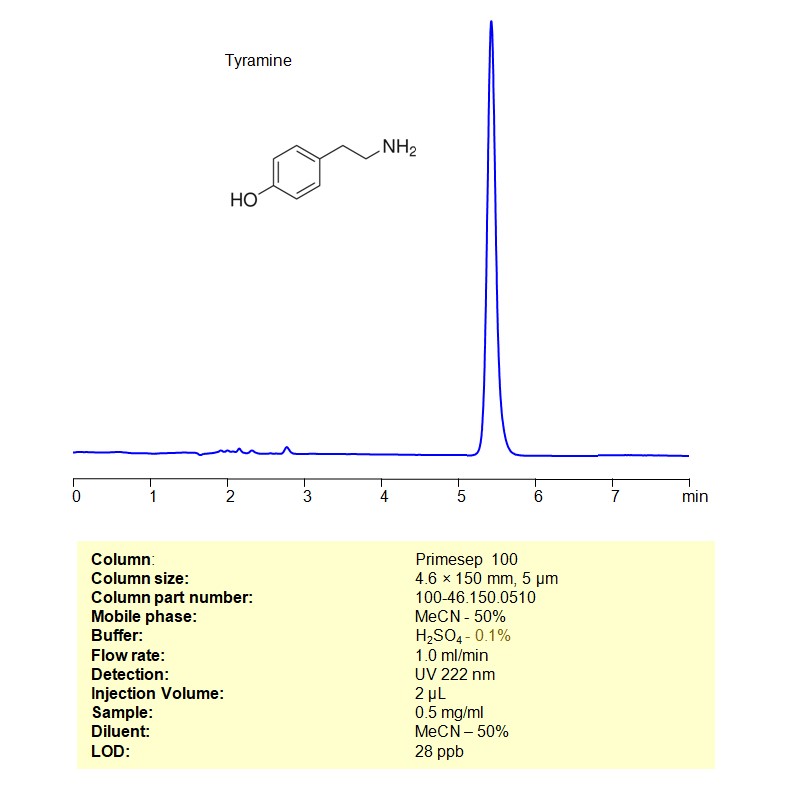High Performance Liquid Chromatography (HPLC) Method for Analysis of Tyramine on Primesep 100 by SIELC Technologies
Separation type: Liquid Chromatography Mixed-mode SIELC Technologies

High Performance Liquid Chromatography (HPLC) Method for Analysis of Tyramine
Tyramine is a naturally occurring monoamine compound that belongs to the class of biogenic amines. It is derived from the amino acid tyrosine and is found in various foods. Tyramine is particularly known for its potential role in certain food sensitivities and interactions with monoamine oxidase inhibitors (MAOIs), a class of medications.
Occurrence: Tyramine is present in foods that undergo fermentation or aging processes, such as aged cheeses, fermented soy products, certain wines, and cured or smoked meats.
Biological Role: It is a trace amine and has been studied for its potential physiological effects, including its role as a neurotransmitter and its impact on blood pressure regulation.
Food Sensitivities: Some individuals may be sensitive to tyramine, and excessive intake in susceptible individuals can lead to symptoms such as headaches, increased blood pressure, and other adverse reactions.
Interaction with Medications: Tyramine is notable for its interaction with MAOIs, a class of antidepressant medications. In individuals taking MAOIs, the consumption of foods high in tyramine can lead to a hypertensive crisis.
Metabolism: In the body, tyramine is metabolized by the enzyme monoamine oxidase (MAO). Inhibition of MAO can lead to increased levels of tyramine, contributing to its potential interactions with medications.
Tyramine can be retained and analyzed using a Primesep 100 mixed-mode stationary phase column. The analysis employs an isocratic method with a simple mobile phase comprising water, acetonitrile (MeCN), and sulfuric acid as a buffer. This method allows for detection using UV at 222 nm
| Column | Primesep 100, 4.6 x 150 mm, 5 µm, 100 A, dual ended |
| Mobile Phase | MeCN/H2O – 50/50% |
| Buffer | H2SO4 – 0.1 |
| Flow Rate | 1.0 ml/min |
| Detection | UV 222 nm |
| Samples | 0.5 mg/ml in MeCN/H2O – 50/50% |
| Injection volume | 2 µl |
| LOD* | 28 ppb |
| Class of Compounds | Biogenic amine |
| Analyzing Compounds | Tyramine |
Application Column
Primesep 100
Column Diameter: 4.6 mm
Column Length: 150 mm
Particle Size: 5 µm
Pore Size: 100 A
Column options: dual ended





